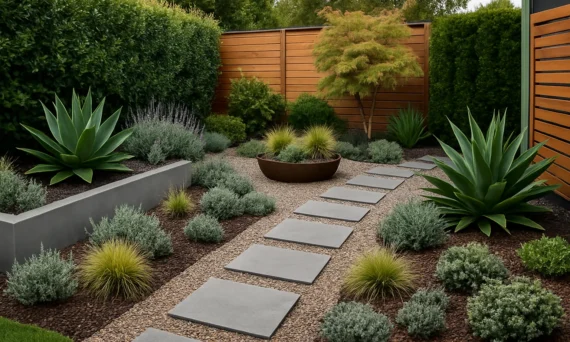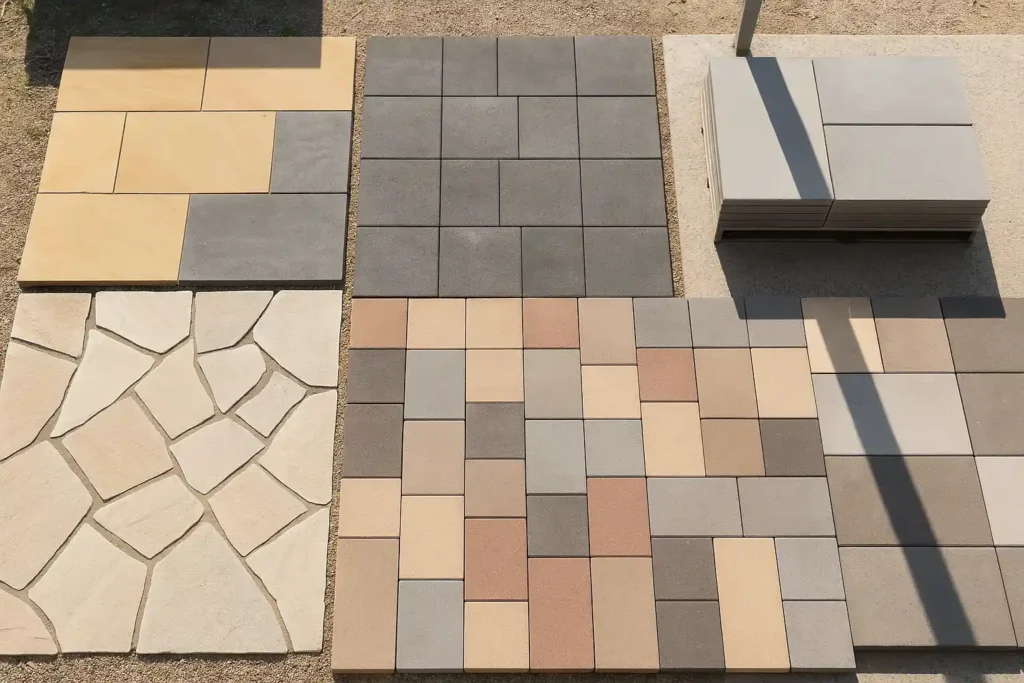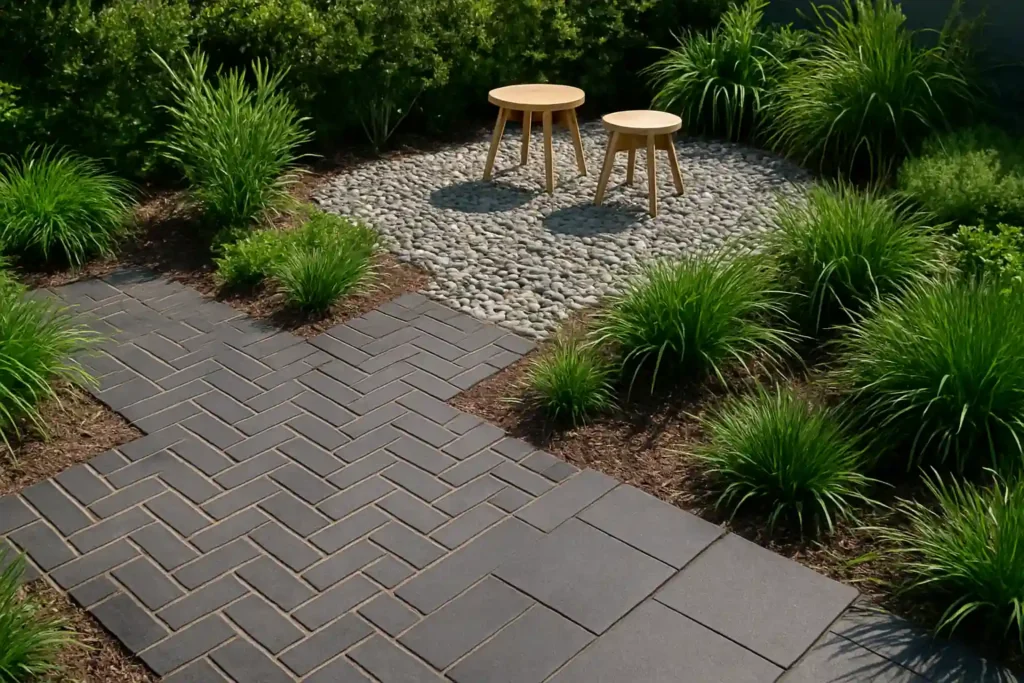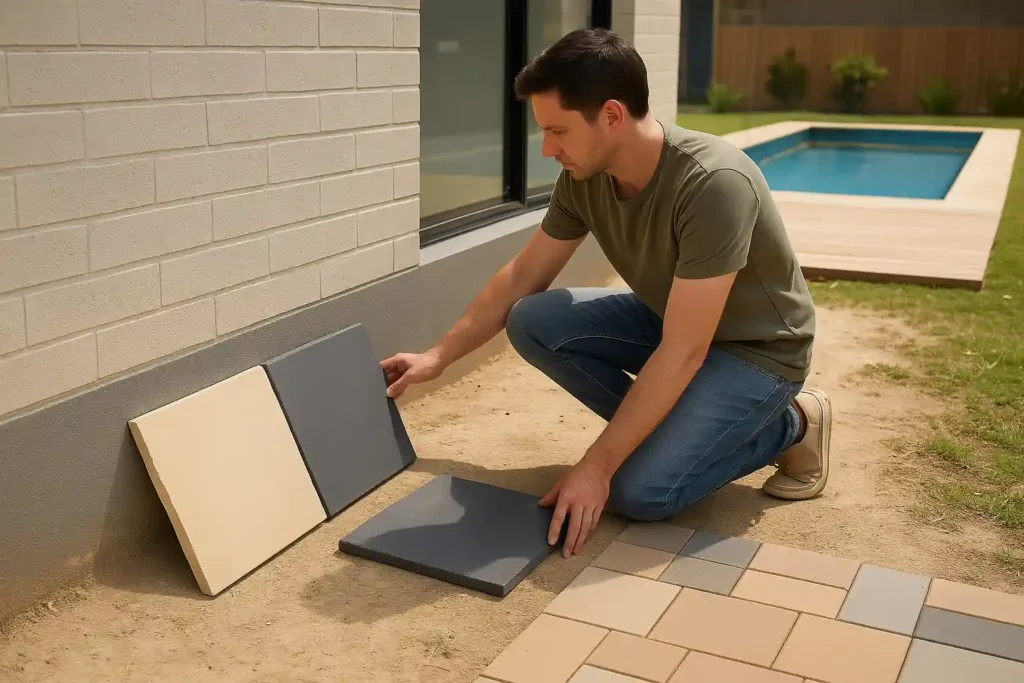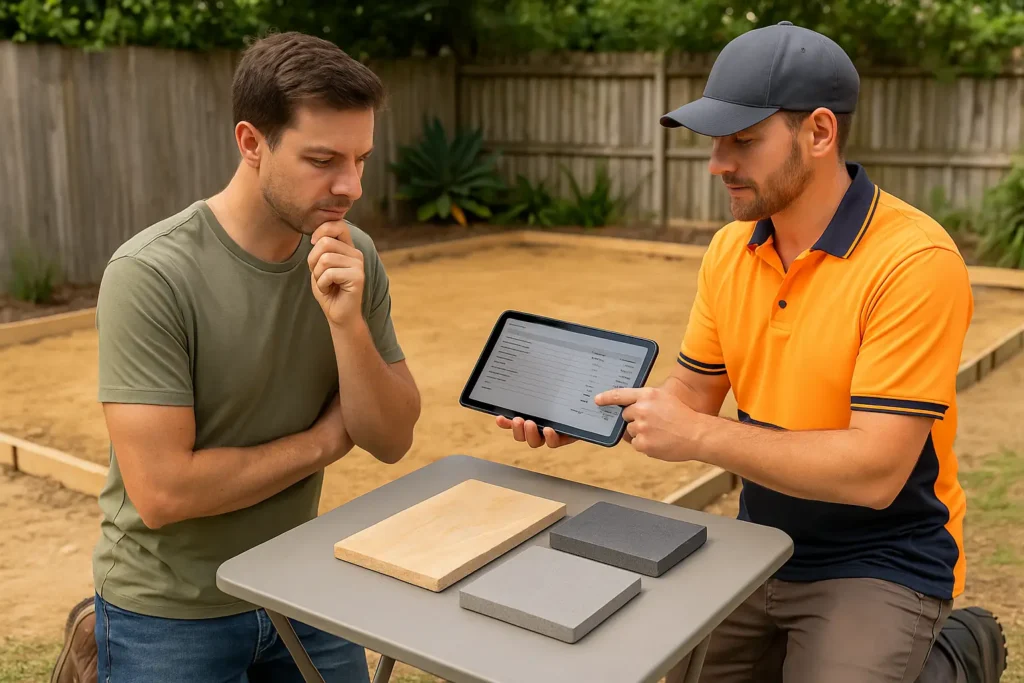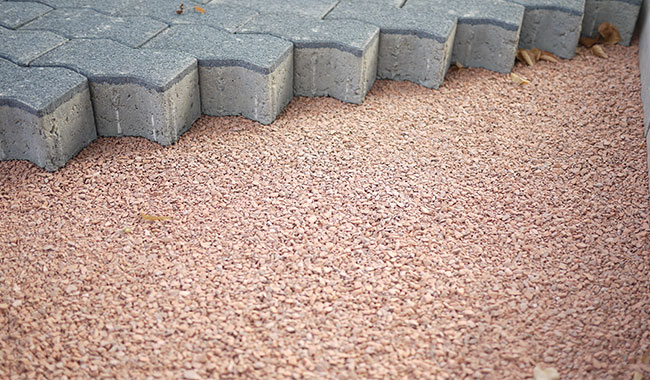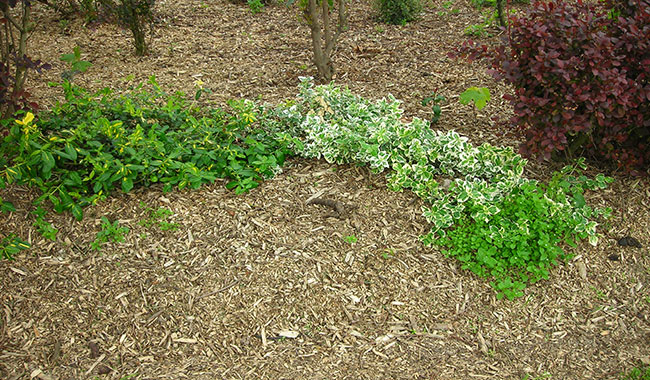How to Design a Low-Maintenance Garden That Still Looks Amazing
Does the thought of spending every weekend mowing, weeding, and watering your garden give you a headache? Join the club.
You’d be surprised at how many Australians love the idea of having a garden but hate the idea of having to do all of the dirty work!
Don’t worry, with a well-designed, low-maintenance garden, you can enjoy both your time and a beautiful outdoor space. With these tips, you’ll only have to “work” (we use that term lightly), 2 hours per week or less.
In this guide, we’ll walk you through time-saving strategies, low-effort plants, and clever layout tips to help you reclaim your weekends while still having a garden that makes the neighbours jealous.
First, let’s understand what makes a design low maintenance.
The Basics of Low-Maintenance Garden Design
The #1 factor in keeping your garden low-maintenance is thoughtful design. You need to plan ahead and select the right layout, plant groupings, and materials or else you’re going to be breaking back every weekend.
We recommend creating a structure that follows the 80/20 rule, where most of your time ends up going to just a few high-maintenance plants or tricky spots in the garden. Get rid of those, and you’ll cut down your workload big time.
Here’s where to start:
Start with Symmetrical Layouts
Ever wonder why formal gardens always look so neat with such little effort? It’s all in the layout. Symmetrical, geometric designs are naturally easier to manage. Their clean lines and repeated patterns make trimming and tidying simple.
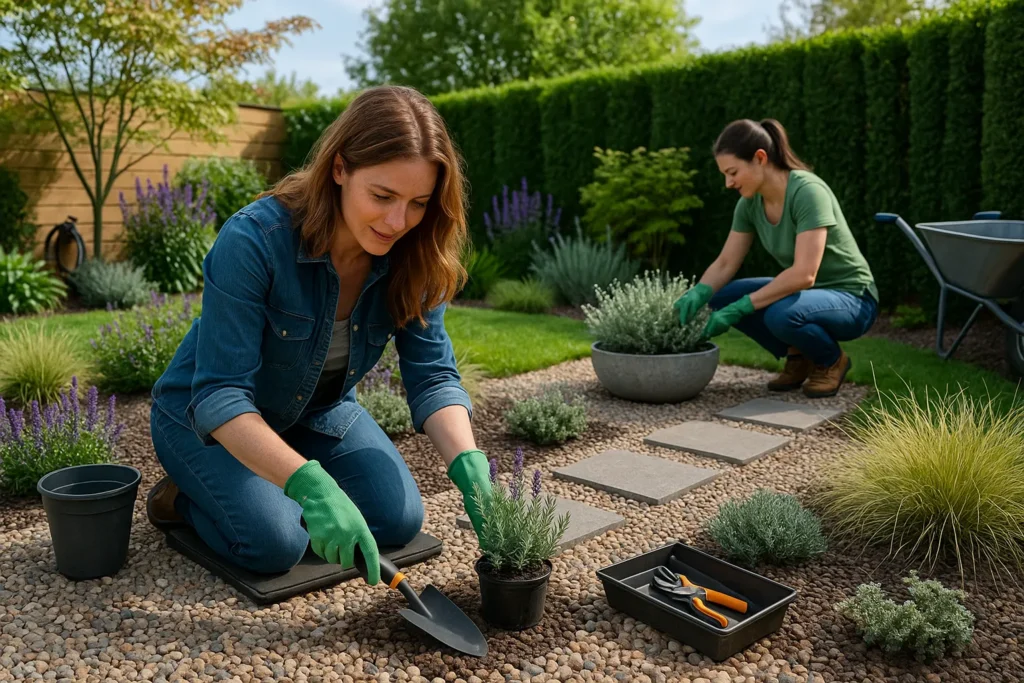
For example, two matching rectangular beds on either side of a path are way easier to keep up than a bunch of scattered, odd-shaped plantings.
Group Plants by Care Requirements
Think of your garden in zones, much like you’d organise your home. This means:
- Keeping thirsty plants like hydrangeas or ferns in naturally damp spots or near your watering system.
- Grouping drought-tolerant ones like lomandra, rosemary, or kangaroo paw where the soil drains well.
- Setting aside a space for higher-maintenance plants like buxus or wisteria that need regular pruning.
This simple zoning trick, called hydrozoning, can cut your water use by 30-50% and make garden upkeep way easier.
Choose Materials That Reduce Weeding
You want to choose smart materials if you’re aiming for both performance and durability. We recommend choosing gravel paths with good weed barriers underneath, solid pavers set on compacted sand, and well-placed stones. They not only look great but also help keep weeds out.
For the absolute best results, go with angular gravel (like decomposed granite) instead of smooth pebbles. It locks in place better and gives you a sturdier path to walk on.
The best part of this approach is that your garden looks polished and put-together while needing minimal upkeep, which is exactly what we’re after. A properly mulched garden can also reduce maintenance by up to 60%, helping your smart choices pay off even more over time.
But the biggest time-saver? Choosing the right plants from the start.
Top Plants for a Low-Maintenance and Beautiful Garden
Now for the fun part: choosing plants that will reward you with years of beauty without constant babysitting. The secret to it is thinking like a lazy gardener (in the best possible way) and selecting plants that practically grow themselves.
Horticulturists group plants based on how long they take to settle in and how much care they need. You’ll want to pick those rated as “low input, high impact.” Let’s look at your options.
Maintenance-Free vs High-Maintenance Plants
Some plants require frequent care to stay healthy, while others are hardy, requiring minimal attention. For instance, hybrid tea roses need weekly fungicide, and bedding plants have to be replanted every season.
You want to skip those and go for perennials that bloom for a long time or shrubs that keep their shape without much pruning. We recommend ornamental grasses like stipa tenuissima as they look great even when they’re not in bloom.
Reliable Plants for the Australian Climates
If you’re gardening in Australia, you’ve got some amazing native plants that handle our tough climate well:
- Callistemon (bottlebrush): These are stunning red blooms with papery bark and needle-like leaves that survive on just 300mm of annual rainfall after settling in.
- Lomandra longifolia: A fine-textured foliage year-round that handles both drought and waterlogging perfectly.
- Anigozanthos (kangaroo paw): Known for its exotic blooms, like the ‘Bush Ranger’ variety, it flowers for 6 to 8 months and faces almost no pest problems.
Companion Planting for Natural Health
Here’s a smart trick permaculture experts love: plant combinations that help each other out naturally. For example, grouping Mediterranean herbs like lavender, rosemary, and santolina creates fragrant barriers that keep common pests away, and all need the same kind of care.
So if you mix plants with different root depths, like shallow groundcovers and deep-rooted shrubs, they each get what they need from the soil without competing, and you don’t have to feed them as much.
Now, imagine pairing those resilient plants with features that never need watering or weeding. Let’s look at the design elements that’ll make your garden low-maintenance.
How to Use Hardscaping for Easy Care
Want to know the real secret behind those picture-perfect gardens that never seem to have a weed? They use hardscaping to do most of the work, while plants add the finishing touches. Pro designers know that focusing on hardscaping gives you the biggest visual impact with the least amount of upkeep.
Here’s all you need to know to get started with hardscaping:
Raised Beds, Edging, and Retaining Walls for Control
Raised beds are a smart and stylish choice for low-maintenance gardening. They take care of common problems like poor drainage, tricky soil, and weeds all at once. Timber sleeper beds are also a good option (at least 200mm high) due to their great drainage and defined edges that help keep grass from creeping in.
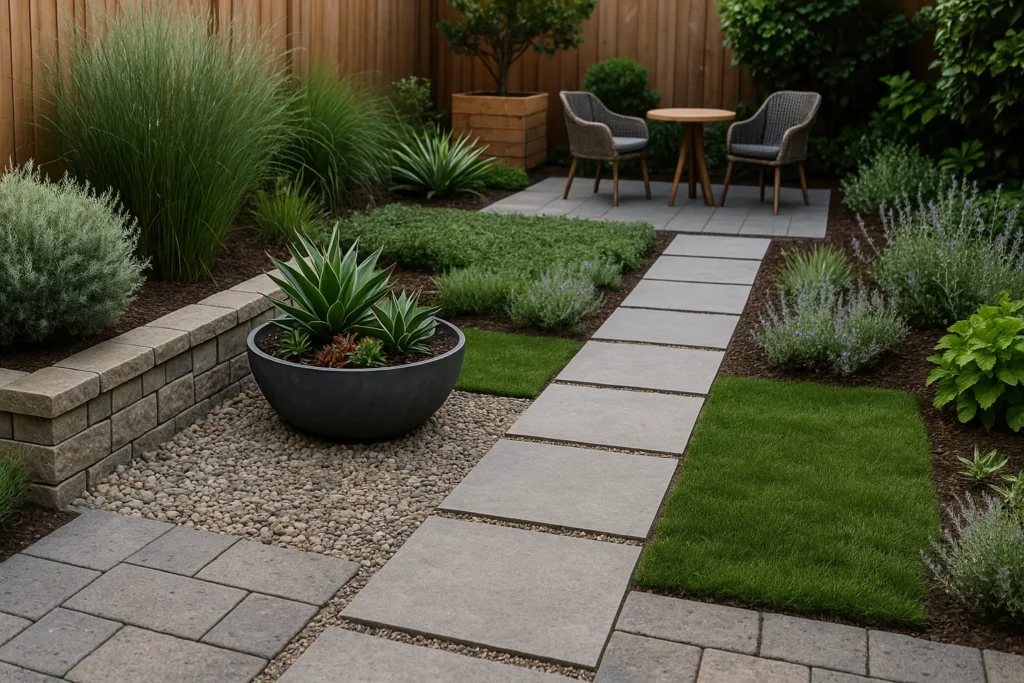
Steel or concrete edging works well too if you’re going for an even cleaner look. It creates tidy lines that mower wheels can follow, which means you can skip the time-consuming hand-trimming that usually takes up 30-40% of your garden maintenance.
Gravel Garden Ideas to Replace Lawn-Heavy Designs
Next, think about swapping out high-maintenance lawn areas for gravel gardens with 10–20mm decorative stones. Decomposed granite in warm tones makes a great backdrop for bold plants like Agave attenuata or Miscanthus sinensis, and it drains way better than heavy clay soil.
Just make sure to lay down a weed mat first and add metal or concrete edging to keep the gravel in place. It’s these little details that separate professional-looking installations from DIY.
Choosing Between Decking, Paving, and Pebbles
Each hardscaping option has its sweet spot based on your specific conditions:
- Composite decking: Skips the yearly timber oiling, making it a low-maintenance choice. To avoid long-term issues, ensure there’s adequate airflow underneath to prevent trapped moisture.
- Concrete pavers on sand: Easy to adjust if the ground shifts, which makes them great for DIY projects. They’re especially handy in areas prone to movement, as you can lift and re-level them without much fuss.
- Natural stone: Super long-lasting, which gives it a timeless appeal. But in regions with freeze-thaw cycles, sealing is essential to prevent cracks and weather damage.
- River pebbles (40–60mm): Great for dry creek beds and mulched spots. Without proper edging, though, they tend to scatter into lawns or paths over time.
Choosing hardscaping materials like these further reduces the time spent on upkeep. In fact, with hardscaping taking the lead in your garden design and plants playing supporting roles, you can cut your yard work by up to 90%.
But even the toughest plants and best designs need water, and that’s where we’re headed to in the next section.
Easy Ways to Cut Time-Consuming Watering with Smart Irrigation
It’s time to tackle that nagging worry about keeping everything alive without becoming a slave to the garden hose. Thanks to modern irrigation technology, smart controllers can cut water usage by 20-50% and help your plants thrive by keeping moisture levels just right.
Let’s take a look at how these systems make gardening easier and more efficient.
Drip Irrigation, Soil Moisture Sensors, and Timers
First up are drip irrigation systems that deliver water directly to the plant roots at a gentle rate of 2 to 4 litres per hour. Compared to sprinklers that are only 65-75% efficient, drip irrigation can go up to 90%.
You can take it a step further with soil moisture sensors (like the Hunter Solar Sync or Rain Bird SMRT-Y), which adjust watering based on real-time soil conditions instead of fixed timers. There are also WiFi-enabled controllers, like the Rachio 3, that learn your garden’s needs and use weather forecasts to skip watering when it’s not necessary.
Rainwater Harvesting and Water-Wise Layout Tips
While smart controllers are great, you can save even more water by paying attention to your garden’s natural watering needs.
Start by placing your thirstiest plants, like ferns and impatiens, in naturally damp spots. This means north-facing areas with morning sun and afternoon shade or gentle slopes that catch runoff from your roof. To make the most of this natural water, a 5,000-litre rainwater tank can collect enough from a 100m² roof to keep a small garden going through most dry spells.
Don’t forget to connect your rainwater system to automated irrigation. This helps us use the water efficiently and reduces our main water use.
But if you’re serious about a low-maintenance garden, why stop at smart watering? Let’s take it a step further by choosing sustainable practices.
Eco-Friendly Gardening Tips That Save You Time and Money
Here’s where being environmentally conscious and being a lazy gardener perfectly align. What we mean here is that sustainable gardening practices are also the easiest to maintain. So, you’re naturally going to save time and effort by using Nature’s super efficient systems.
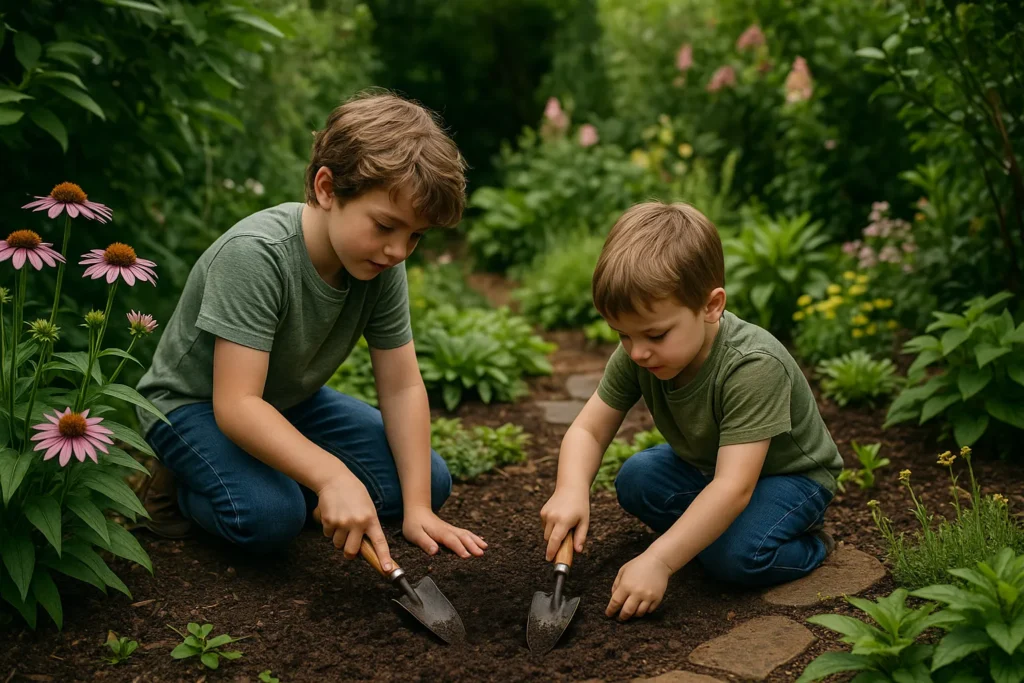
Let’s have a look at why sustainable gardening works so well.
Mulch Benefits for Weed Suppression and Water Retention
A 75-100 mm layer of quality organic mulch is like hiring a full-time garden assistant. Chunky hardwood mulch can block out 85-90% of yearly weeds and cut soil water loss by up to 70% on hot days.
The trick is picking the right mulch for your plants. Acid lovers like azaleas do well with pine bark mulch, while Mediterranean plants like gravel because it doesn’t hold extra moisture around their bases.
Composting at Home
Don’t let composting scare you off. Even a simple three-bin setup made from pallets can handle your kitchen scraps easily. To keep it odour-free, you just have to maintain the correct carbon-to-nitrogen ratio (30:1), which is roughly three parts brown materials (leaves, paper) to one part green materials (kitchen scraps, grass clippings).
We recommend hot composting at 55-65°C since it kills weed seeds and breaks down stuff in just 6 to 8 weeks, instead of the 12 to 18 months cold composting needs.
No-Dig Garden Beds: Less Work, Better Results
If you’ve never heard of no-dig gardening methods, it involves layering organic matter directly on top of existing soil, copying the way a natural forest floor works.
This method builds soil carbon, helps the soil hold 40-60% more water, and saves you from the hard work of double-digging. You can try the lasagna method (alternating layers of carbon-rich and nitrogen-rich materials) to create a rich soil in just one season while suppressing existing weeds completely.
These sustainable practices are a win-win all around. They make gardening easier for you and better for the environment, so there’s no reason not to give them a try.
Now, it’s time to make sure your outdoor space fits your lifestyle, not the other way around.
Tips for Creating a Garden That Matches Your Lifestyle
Here’s a quick reminder as you’re reading this: gardening shouldn’t take over your life. The best low-maintenance gardens are built around how you want to use your outdoor space, something landscape architects call “program-driven design.”
Here’s what you need to know about making your garden work for your lifestyle.
Outdoor Spaces for Effortless Enjoyment
Try setting up clear zones for different activities by paying attention to the sun and views. For example, a morning coffee spot works best with eastern sun and some wind shelter. But evening hangouts are perfect with western views and some shade overhead.
Our usual recommendation is to add paved areas around outdoor kitchens or fire pits. This helps keep muddy feet and grass damage away, and they only need an occasional clean to stay looking good.
Furniture, Fire Pits, and Pergolas as Design Anchors
You can always use permanent features as the focal points of your garden to reduce the pressure on plants to provide all the visual interest:
- Built-in seating area: Use concrete blocks with timber caps to make low-maintenance seating that stays put all year.
- Gas fire tables: Lava rock surrounds can give you a fun outdoor spot without the hassle of wood or ash cleanup.
- Steel pergolas with climbing wires: This can add instant structure and support minimal-care climbing plants.
- Deciduous vine pergolas: Plants like Parthenocissus quinquefolia offer natural summer shade and winter sun without any extra work.
Making Your Space More Practical with the Right Plant
You already get it by now that low-maintenance gardening equals a space that feels natural (and lets you embrace your laziness). So it’s only natural to choose tough plants that bounce back easily.
Ornamental grasses and succulents handle soccer balls and pets better than fragile perennials. To keep things tidy, you can add practical storage like weatherproof deck boxes that can also be used for extra seating, so your garden tools are close by but out of sight.
If you’ve stuck with us this far, here’s a secret: the best low-maintenance gardens often break the usual landscaping rules. They pick one standout feature and keep everything else simple. This way, they make a bigger visual impact than gardens trying to do too much at once.
Now that you’ve got the know-how, it’s time to put it to work.
Final Tips for a Low-Maintenance Backyard
Ready to start changing up your outdoor space? Pick one part of this guide and work on it this month. Maybe set up a simple drip irrigation system or swap out that tricky lawn area for gravel and easy-care plants.
Remember, your low-maintenance dream garden is possible when you work with nature instead of against it. Your future self will thank you for every smart choice you make today.
